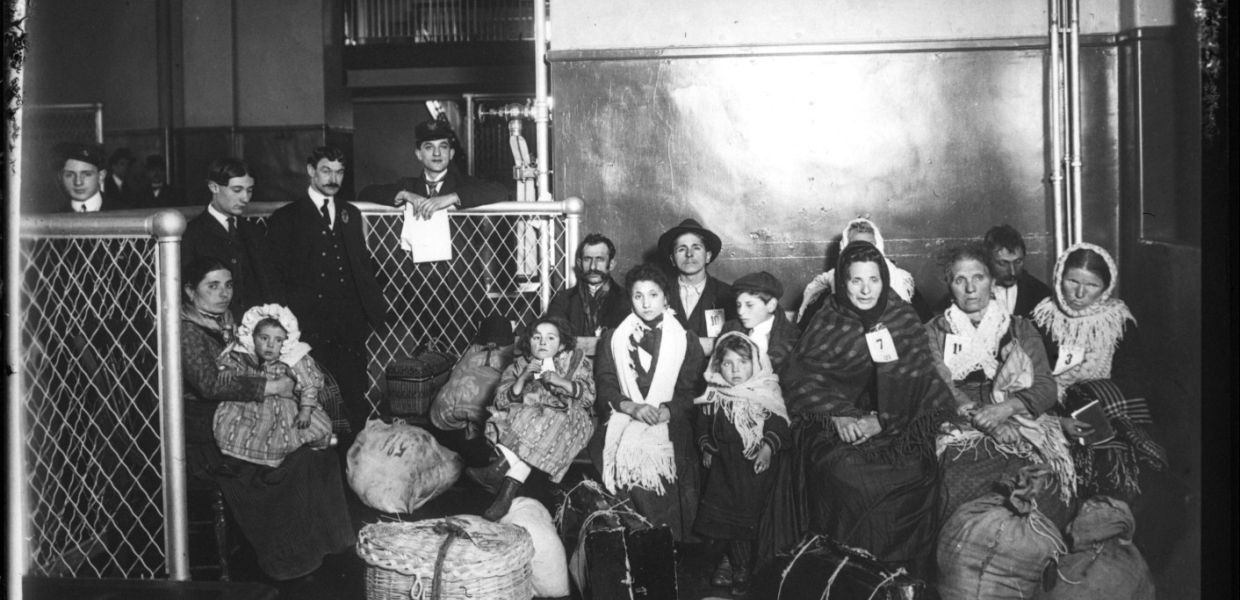A digital project by Europeana invites museums and people to show the contribution migration makes to culture for European Year of Cultural Heritage
2018 will be the European Year of Cultural Heritage when citizens across Europe are invited to explore what it offers in all its forms. Europeana, the digital face of Europe’s cultural heritage, partners the Year and will supply the cross-border and cross-generational element to activities.

- Title:
- Emigrants attendant d'être examinés
- Creator:
- Agence Rol
- Institution:
- National Library of France
- Copyright:
- Public Domain
The Year will spotlight cultural heritage as a part of people’s everyday lives, ‘where the past meets the future’; in 2018 Europeana will focus on migration to show that culture is the product of multicultural influences down the centuries - from the food people cook and eat, to the music they listen and dance to, and even the clothes they wear.
Europeana invites people young and old to be part of its Europe-wide project to build an online collection dedicated to migration.
-
Throughout the Year people will be able to share and upload their family stories and memorabilia online to Europeana Migration Collection- building it together with migration museums across Europe.
-
All of the content on the site will relate to migration and, from photos to films and letters to artworks, it will tell the stories of the people who have journeyed to, from and across Europe, uncovering the contribution of migration to our cultural heritage.
-
The items will be an important online testament to Europe’s rich history of migration, freely available for anyone to discover and use for education, research, inspiration and pleasure.
-
Participatory activities begin in March 2018 and as the Collection builds throughout the Year people will also be encouraged take part
-
by exploring their cultural heritage, sharing what they discover, through exhibitions and galleries
-
via social media with the hashtags #EuropeanaMigration and #EuropeforCulture
-
through working with schools and retirement homes.
-
Elisabeth Niggemann, Chair of the Europeana Foundation and General Director of the German National Library, explains: ‘Europe's cultural heritage has shaped the collective memory and identity of European citizens through the centuries. From folklore and traditions to visual arts and fashion, our diversity is an invaluable resource that can stimulate connections between people of all ages, backgrounds and cultures. Europeana and Europe’s citizens will help tell this story as part of the European Year of Cultural Heritage.’
ENDS
Media contacts:
Camille Tenneson - Europeana Foundation
E: Camille.Tenneson@europeana.eu
Eleanor Kenny - Europeana Foundation
E: Eleanor.Kenny@europeana.eu
Notes for the editor:
Europeana is Europe’s platform for digital cultural heritage with a mission to ‘transform the world with culture’. Europeana Collections is Europe’s digital library, museum, gallery and archive. From books, photos and paintings to television broadcasts and 3D objects, Europeana Collections provides online access to a vast store of cultural heritage material from across Europe for everyone to find, use and share: for research, for learning, for creating new things. (@EuropeanaEU)
Europeana DSI is co-financed by the European Union’s Connecting Europe Facility.
